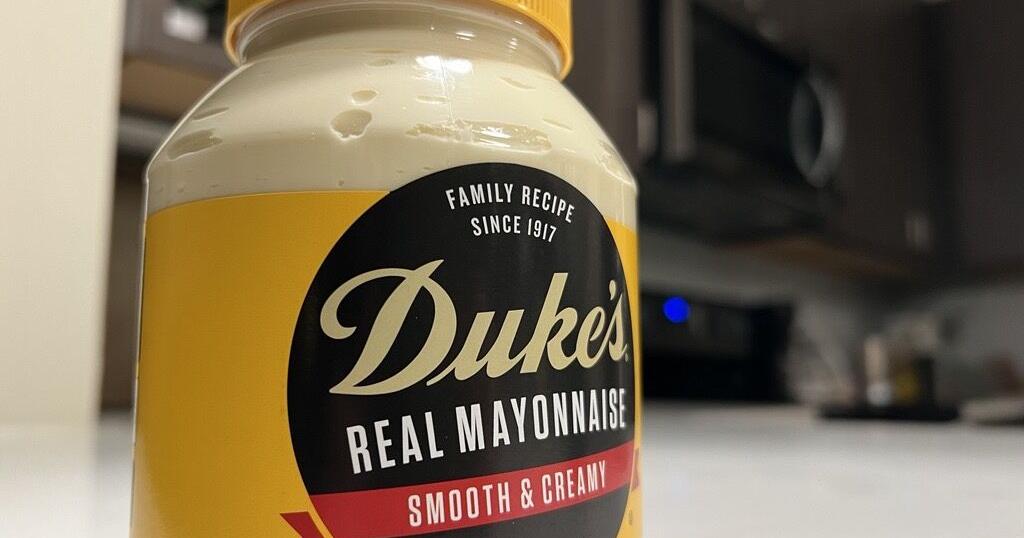A new cookbook aims to inspire Upstate South Carolina residents to embrace mayonnaise, particularly Duke’s Mayonnaise, which has deep local roots. VisitGreenvilleSC, the tourism marketing agency for Greenville County, is excited to announce the release of Eugenia Duke’s Unofficial Mayo Guide to Greenville. This cookbook commemorates the 108th anniversary of the beloved condiment’s creation right in Greenville.
The collection showcases 24 unique recipes from a variety of local restaurants, including popular spots like Comal 864, Soby’s, and Stella’s Southern Bistro, all highlighting mayonnaise as a key ingredient.
Brenda Cassabon, a public relations representative for VisitGreenville, spoke about the importance of mayonnaise in Southern cuisine. “Living in the South, you know that it’s just an ingredient that everyone can’t get enough of, and so we’re super proud of that heritage. We kind of had a culinary gold mine on our hands, so to speak. And so we wanted to make sure that people knew that.”
In recent years, VisitGreenville has embraced the cult following of Duke’s Mayo, not only publishing this cookbook but also launching a Mayo Trail that includes historic sites and local eateries connected to the condiment.
Cassabon noted that Greenville’s significant relationship with Duke’s Mayonnaise has often been overlooked. As the city reaches several culinary milestones – including filming for *Top Chef* and the Michelin Guide extending its reach into the Southeast – she believes this is the perfect opportunity to highlight that link.
“I think it’s a vehicle in order to tell Greenville’s culinary story, and Duke’s is such a big part of that story,” Cassabon added.
Although Duke’s Mayonnaise has become synonymous with South Carolina cuisine, it is worth noting that the company is currently owned by a Boston-based private equity firm, Advent International, which acquired Duke’s Virginia-based parent company earlier this year. Yet, the legacy began right in Greenville.
In 1917, during World War I, Eugenia Duke started crafting sandwiches for soldiers at Camp Sevier from her home kitchen in Greenville, selling them for just ten cents each. According to historical markers in the area, while the sandwiches gained attention, it was her mayonnaise that truly stood out.
By 1923, Duke’s flourishing mayonnaise production had led her to bottle the condiment from a factory located along the Reedy River, now known as the Wyche Pavilion, which still stands in the heart of downtown Greenville. In 1929, she sold the business to a food distributor based in Virginia, assuming the role of spokesperson before ultimately relocating to California.
The recipes featured in VisitGreenville’s cookbook include classic mayonnaise staples, such as Bobby’s BBQ coleslaw and heirloom tomato sliders from Fireforge Crafted Beer. Additionally, the book presents more inventive applications of Duke’s Mayonnaise, including a beef carpaccio with smoked paprika aioli from Fork and Plough and pimento pierogi filled with potatoes, cheddar cheese, pimento peppers, and mayonnaise from Feed and Seed.
For those with a sweet tooth, the chefs at Topsoil contribute a creative recipe they call “blueberry swamp cobbler pie.”
Interestingly, Cassabon found that reaching out to chefs for recipes using Duke’s Mayonnaise was a seamless process. “It seems that every Southern chef has a story with Duke’s and a really fond memory to it,” she shared.
As the community celebrates the release of this unconventional cookbook, it continues to honor the rich culinary history tied to Duke’s Mayonnaise, affirming its role in the Southern palate and promoting the flavors that define Greenville’s food culture.






